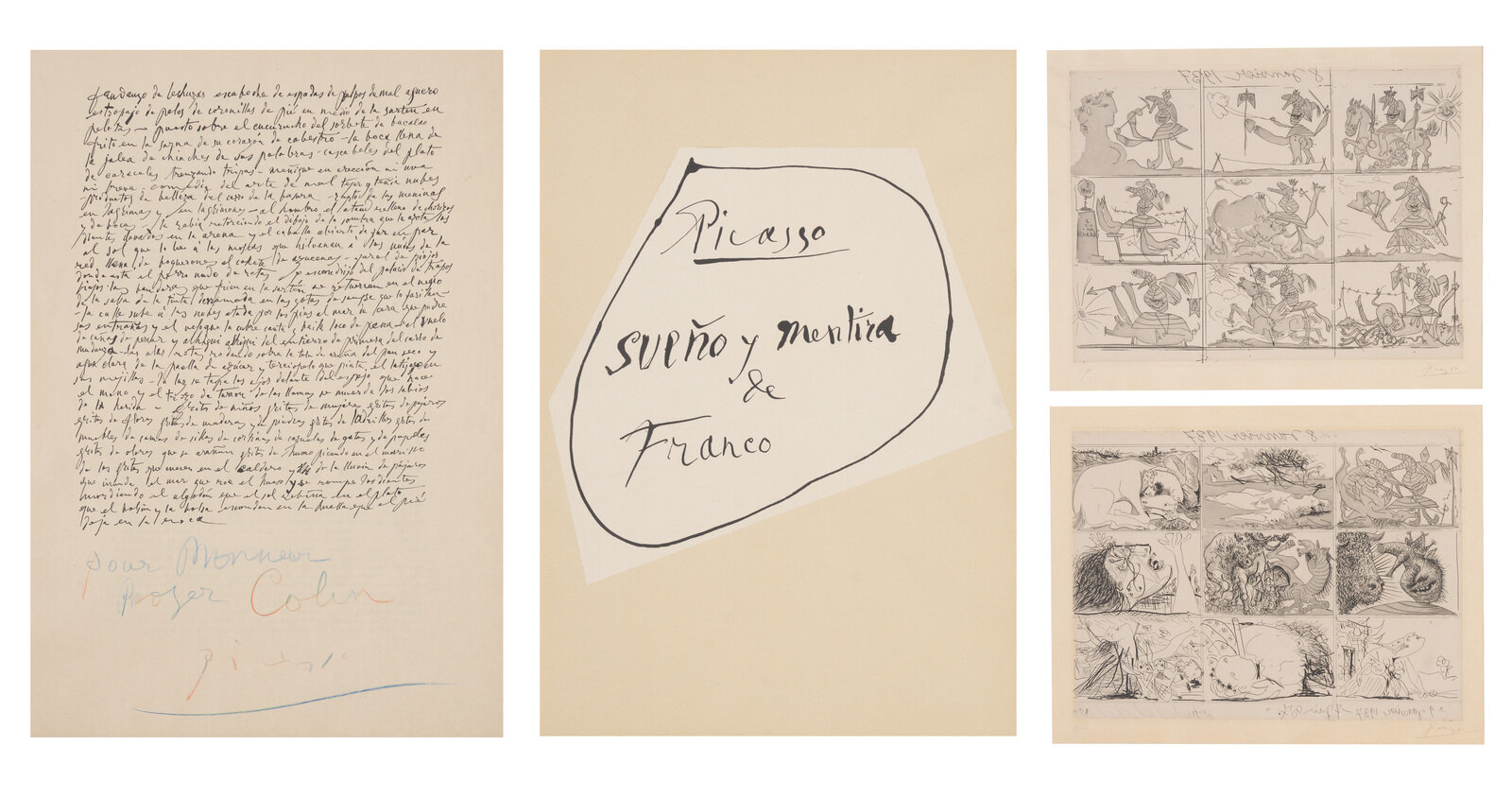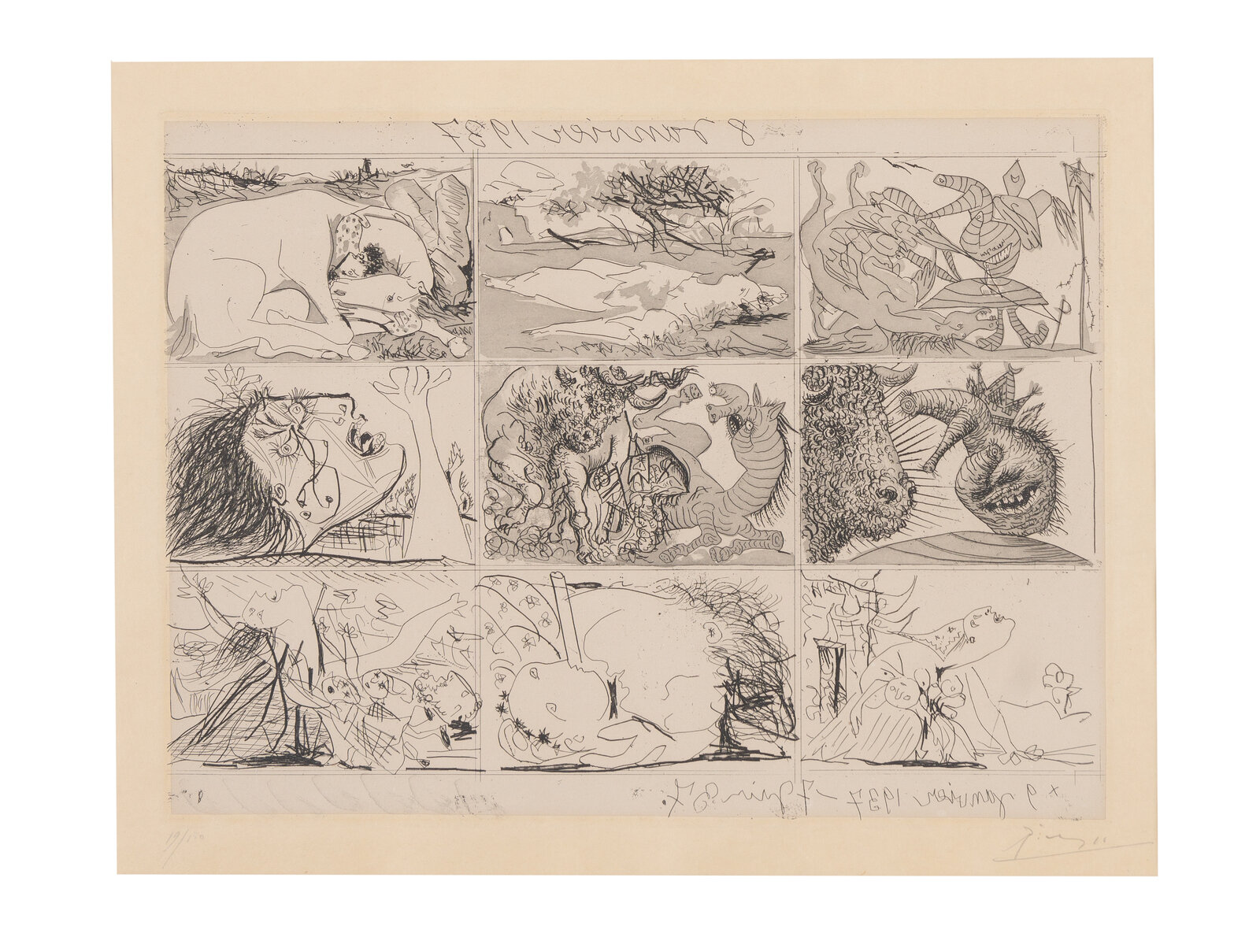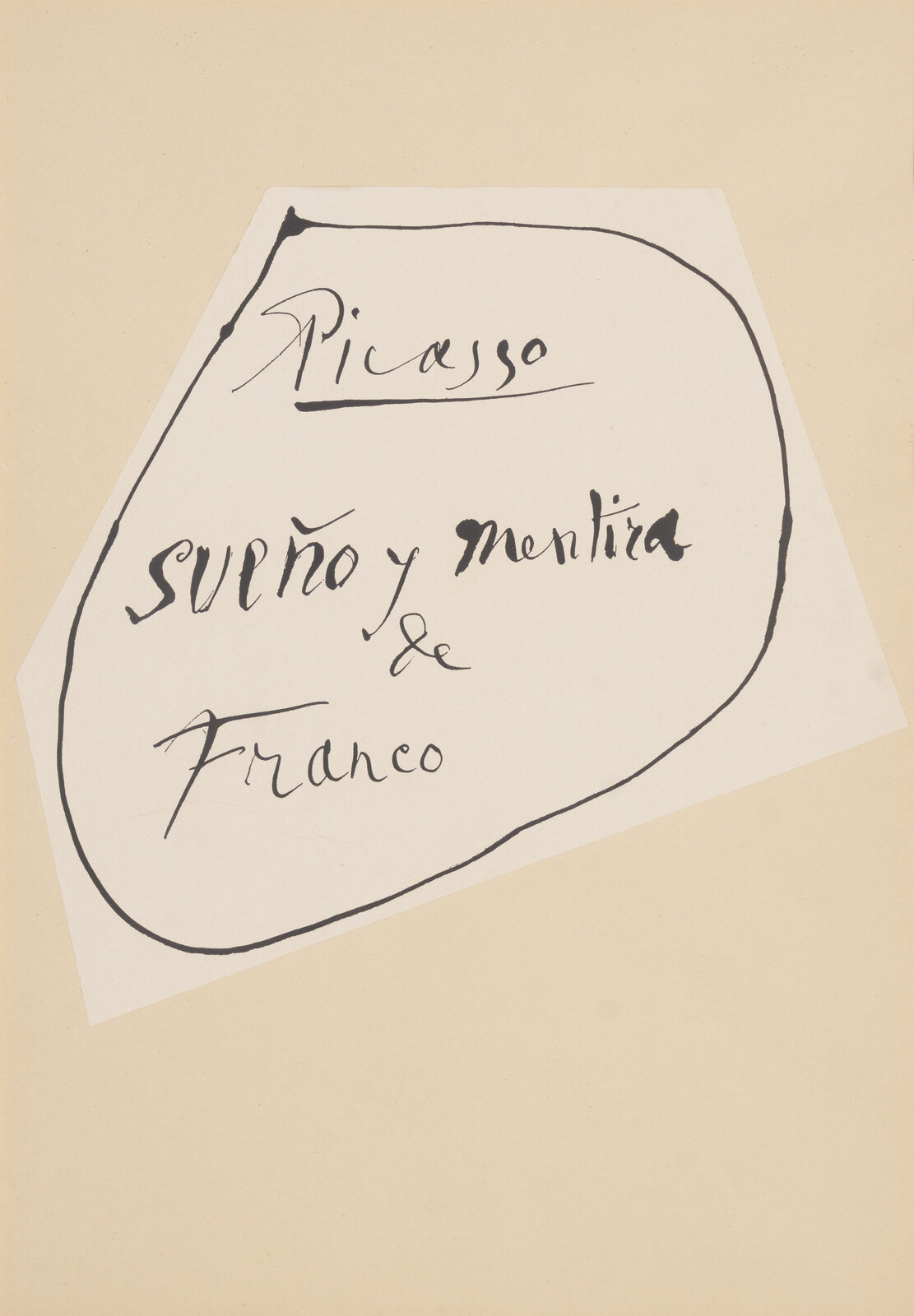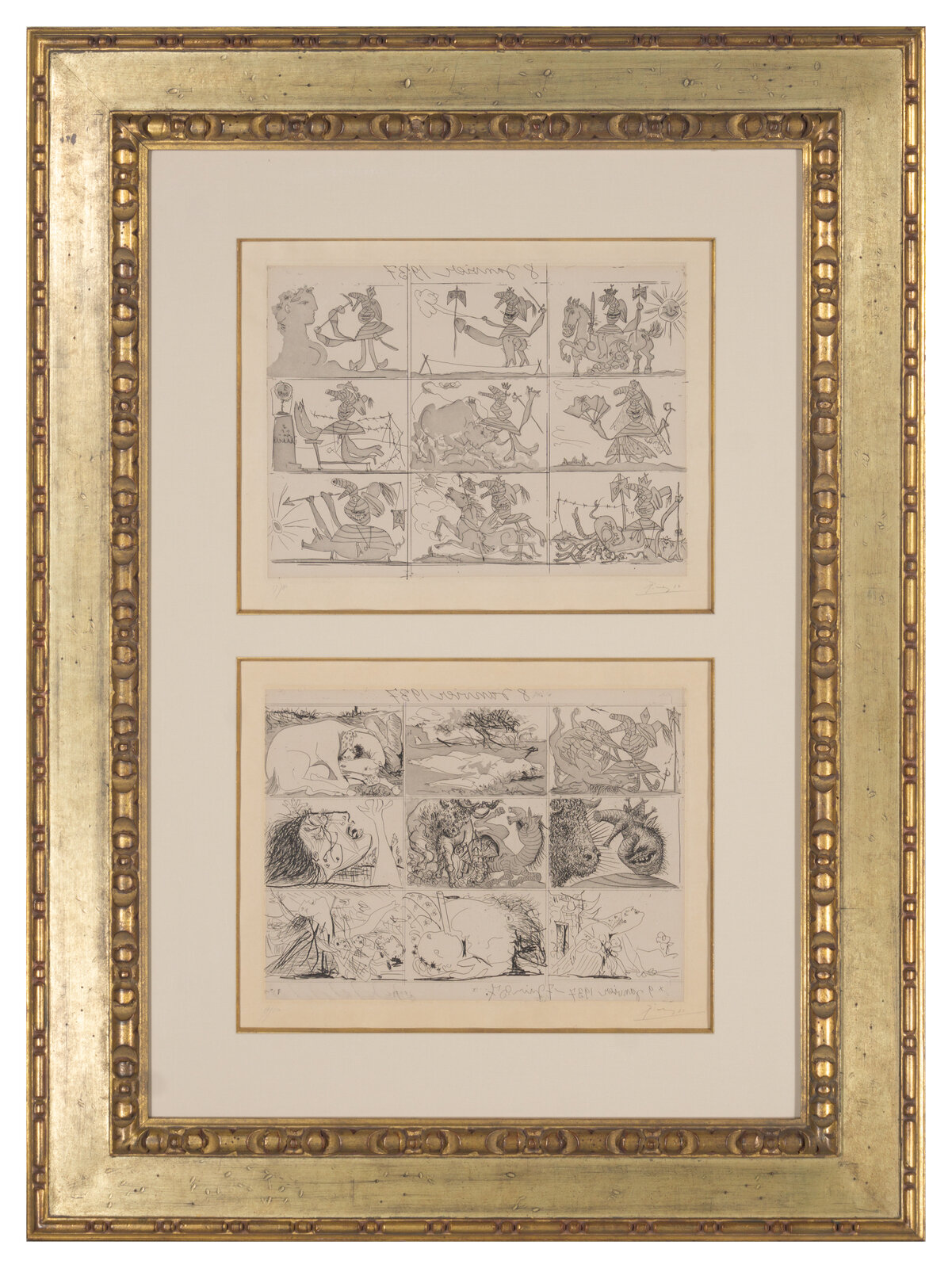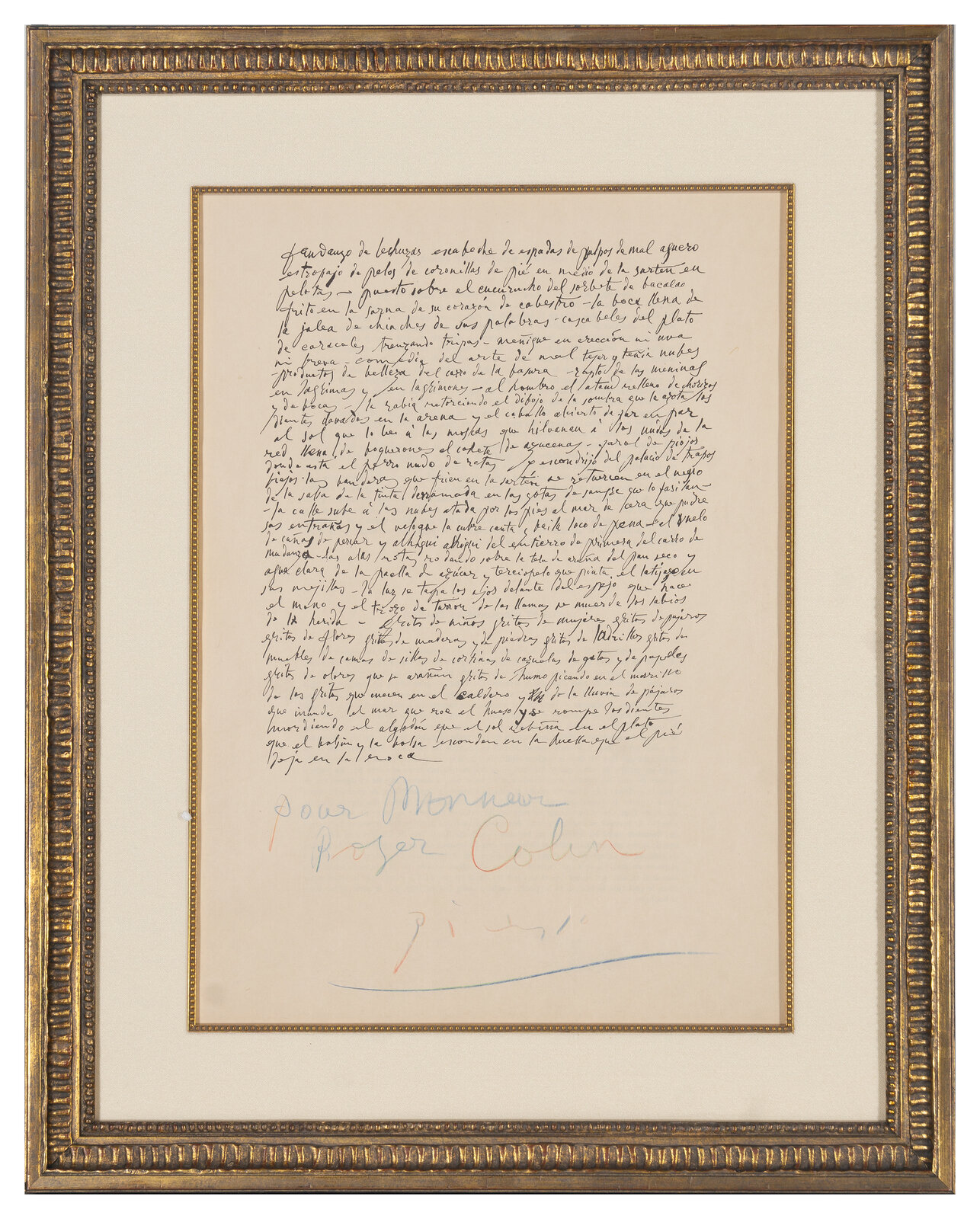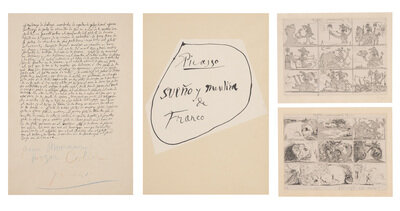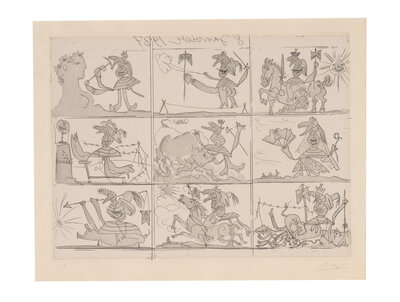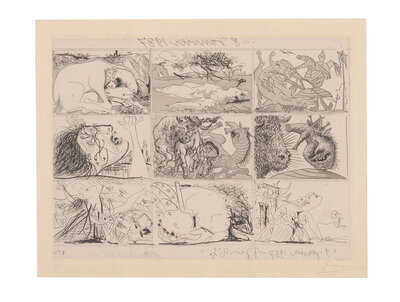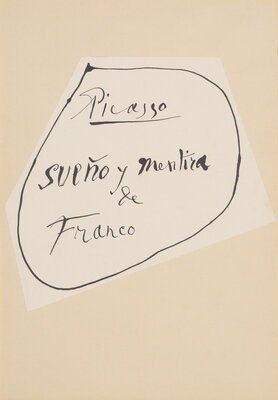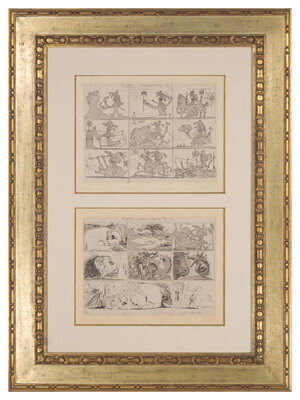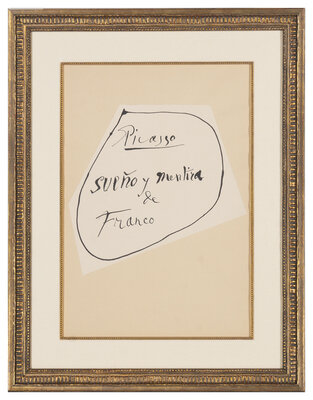Pablo Picasso
(Spanish, 1881-1973)
Sueño y mentira de Franco (the pair, with accompanying dedicated text page and frontispiece), 1937
Sale 1328 - Prints and Multiples
Apr 25, 2024
10:00AM CT
Live / Chicago
Estimate
$15,000 -
$20,000
Sold for $38,100
Sold prices are inclusive of Buyer’s Premium
Lot Description
Pablo Picasso
(Spanish, 1881-1973)
Sueño y mentira de Franco (the pair, with accompanying dedicated text page and frontispiece), 1937
etchings with aquatint
each signed and numbered 19/150 in pencil; text page bears signature and dedication
Each: 12 1/2 x 16 1/2 inches.
Property from a Private Collection
Published by the Artist
Provenance:
Russeck Gallery, Palm Beach
Literature:
Bloch 297-298; Baer 615- 616
Lot Essay:
Art is not made to decorate rooms. It is an offensive weapon in the defense against the enemy.
-Pablo Picasso
Commenced by Picasso in January 8, 1937, Sueño y mentira de Franco (The Dream and Lie of Franco) is a vitriolic artistic response to the onset of the Spanish Civil War, which began in July 1936. Although the artist left Spain for France at the turn of the twentieth century, he remained strongly invested in his home country. The atrocities committed by General Francisco Franco’s military campaign spurred Picasso to openly condemn the regime with the creation of the present works.
Composed as a grim comic, the two prints are each subdivided into three rows of three scenes that together form an eighteen-scene narrative. Picasso executed the images on the plates from left to right, but because of the printing inversion of etched plates, the scenes on paper must be read right to left. Rather than correcting the mistake, the artist chose to keep the reversal in order to express the chaos of war and Franco’s inversion of the established order, the carnivalesque Mundus inversus—the world turned upside down.
Beginning in the first plate, Franco is depicted as medieval knight acting out parodies of heroic feats, dangerous in his haplessness—a grotesque turn as Spanish emblem, Don Quixote. Among other scenes, he is shown gored by a bull, also a symbol of Spain; dressed as a woman; and riding a pig. By the second plate, Franco’s vision of himself as Spanish hero is belied by the darker reality. In the upper right image, the general devours the innards of his own horse, which he has just killed. The remaining scenes were added on June 7, six weeks after the Basque town of Guernica was leveled by Nazi bombs with Franco’s support. The images include raw portrayals of a screaming figure and a wailing woman grieving over a dead child. These scenes are directly related to Picasso’s powerful anti-war mural painting Guernica, also created in 1937.
On each plate, Picasso etched the date he began the work. Not only does this document the artworks, but it also overtly declares his critique of the violence of the contemporary conflict. In yet another act of defiance, Picasso donated all proceeds from the sale of prints to Spain’s Republican government. The pair of prints were produced in an edition of 800 with a stamped signature and an edition of 150 on larger sheets with pencil signatures. The present works are part of the rare hand-signed edition of 150, complete with the title page and dedicated text.
Condition Report
Framed together: 47 x 35 inches.
Two text pages, each framed: 28 3/4 x 22 3/4 inches.
Condition of plates:
sheets: 15 x 22 1/2 inches.
Each sheet taped to mat window at extreme upper right and left corners verso; uneven toning to sheet; unobtrusive handling creases in margins. Please request additional images.
Two text pages, each framed: 28 3/4 x 22 3/4 inches.
Condition of plates:
sheets: 15 x 22 1/2 inches.
Each sheet taped to mat window at extreme upper right and left corners verso; uneven toning to sheet; unobtrusive handling creases in margins. Please request additional images.
The physical condition of lots in our auctions can vary due to
age, normal wear and tear, previous damage, and
restoration/repair. All lots are sold "AS IS," in the condition
they are in at the time of the auction, and we and the seller make
no representation or warranty and assume no liability of any kind
as to a lot's condition. Any reference to condition in a catalogue
description or a condition report shall not amount to a full
accounting of condition. Condition reports prepared by Hindman
staff are provided as a convenience and may be requested from the
Department prior to bidding.
The absence of a posted condition report on the Hindman website or
in our catalogues should not be interpreted as commentary on an
item's condition. Prospective buyers are responsible for
inspecting a lot or sending their agent or conservator to inspect
the lot on their behalf, and for ensuring that they have
requested, received and understood any condition report provided
by Hindman.
Please email fineart@hindmanauctions.com for any additional information or questions you may have regarding this lot.
